Most Promising Science Poster Prize 2022: Access Microbiology
Posted on July 18, 2022 by Microbiology Society
Throughout Annual Conference 2022, delegates showcased excellent posters and exciting research. The Microbiology Society Journals ‘Most Promising Science’ prizes were awarded by Access Microbiology Editors. In this blog, we meet the winners to find out more about them and their research.
Isobel Garratt: 'Polymicrobial in vitro bladder model development for studying catheter associated urinary tract infections'
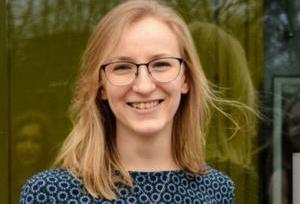
Who or what inspired you to be a scientist?
From a toy microscope to slime making, my parents always encouraged science and creativity growing up. I remember the fascination learning and discovering new things in science lessons. I still love the creative discovery of science that was shown to me as a child and couldn’t imagine doing anything else!
What are you currently working on and what area of your research excites you the most?
My research focuses on understanding polymicrobial catheter associated urinary tract infections. Polymicrobial microbiology is exciting and novel but so clinically important. I am excited to develop a method for my work and use it to ask exciting and novel research questions including the impact of biocides on a polymicrobial community.
How would you explain your poster to a child under 10?
Sometimes, we can’t go to the toilet by ourselves, we need to use something called a catheter to help! But they can have lots of bugs on them that can make us really ill. I am trying to understand these bugs better and what they do to make us ill.
What would you be doing in your career if you weren’t a scientist?
I really enjoy being creative and baking so if I wasn’t doing science I would probably be pursuing something that involved baking cakes or making and sewing things!
Keren Turton: 'The Type 3 secretion system is a crucial mediator of macrophage-Achromobacter spp. interaction'
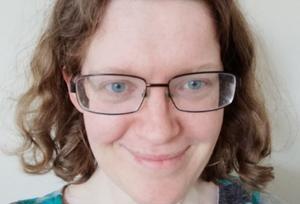
Who or what inspired you to be a scientist?
I was inspired to become a scientist after reading Jurassic Park by Michael Crichton. I initially wanted to be a palaeogeneticist, but soon became interested in the world of pathogens and their bizarre biology.
What are you currently working on and what area of your research excites you the most?
I’m developing a mutagenesis toolkit for mutating multidrug-resistant Achromobacter xylosoxidans. Their resistance precludes a thorough investigation of their effectors, as we can’t create markerless gene mutations. I’ve done mutagenesis in Achromobacter insuavis, so for that I’m most excited about deconvolving the specific bacterial effector and inflammasome sensor involved in pyroptosis [inflammatory regulated cell death].
How would you explain your poster to a child under 10?
Achromobacter is a bacterium that can get into people’s lungs, making them sick. Macrophages (immune cells) try to eat the bacteria (like Pac-Man), but these bacteria can survive this and trigger the macrophage to explode. I’m working out how the bacteria and macrophages recognise each other to cause this specific response.
What would you be doing in your career if you weren’t a scientist?
I hope I’d be a science fiction author. Or possibly I’d be in a different line of research, spending time in archives investigating the history of blood donation politics.
Mark Reglinski: 'Characterisation of a novel Type VI secretion system associated lipoprotein from Serratia marcescens'
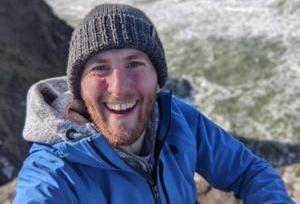
Who or what inspired you to be a scientist?
My dad who is also an academic scientist. Growing up I thought he was smarter than all the other dads because “he was a scientist”. He retired as a Reader a few years ago. I have a bet with him that I can make Professor by the same age.
What are you currently working on and what area of your research excites you the most?
I currently work on the Type VI secretion system however my first love is vaccine design. I plan to apply for funding to investigate a particular class of proteins that I think would make excellent vaccine targets. My supervisor is extremely supportive of this and has recently allowed me to conduct some preliminary experiments. Watch this space…
How would you explain your poster to a child under 10?
Bacteria are tiny living things that can be football or sausage shaped. Lots of bacteria want to live in the same places but only with their friends and family. This often leads to fighting. The Type VI system is like a tiny sword that bacteria use to protect themselves when fights break out. We want to work out how these swords are made.
What would you be doing in your career if you weren’t a scientist?
Probably working in catering. Before I was a scientist, I worked as a commis chef at a restaurant on the Royal Mile in Edinburgh. It was hard work, but I really loved it.
Raphael P Galleh: 'Sialidase of Tannerella forsythia upregulates pro-inflammatory cytokines and is inhibited by di-fluoro sialic acid 2e3aDFNeu5Ac9N3'
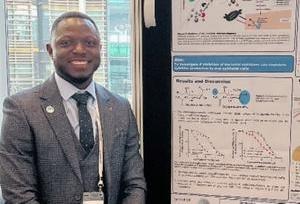
Who or what inspired you to be a scientist?
My inquisitive nature wanting to know why people fall sick, what causes the sickness and how these sicknesses can be treated
What are you currently working on and what area of your research excites you the most?
I'm currently working on 'understanding ulycancs and glycosidases in infection and biofilm formation as a route for novel antimicrobials'. Also, the fact that our novel compound could block bacterial sialidase actions in biofilm formation, adhesion and invasion of host cells and down-regulate pro-inflammatory cytokines expression excites me the most
How would you explain your poster to a child under 10?
You know the gum diseases called Caries and Gingivitis? Good! Periodontitis is the chronis stage that can lead to tooth loss. Tannerella forsythia and Porphyromonas gingivalis are tiny organisms that reside in the mouth and are mostly responsible for this disease. As such, I am looking for new drugs that can prevent them from causing gum diseases.
What would you be doing in your career if you weren’t a scientist?
I would have continued with my music career and hosting of events as an MC. Nonetheless, I have no regret being a scientist, especially a microbiologist.
Thomas MacCreath: 'Probing the Clostridioides difficile–host interface using innovative gut mimics'
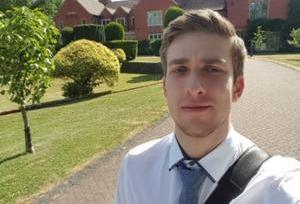
Who or what inspired you to be a scientist?
I had always fostered an interest in unpicking how processes work, which naturally attracted me to the STEM subjects. However, it was my undergraduate lecturer, Dr Tony Worthington, who inspired and supported me to pursue the career path I am on. For this, I will always be grateful to him.
What are you currently working on and what area of your research excites you the most?
I am currently working on understanding Clostridioides difficile colonisation, predominantly which bacterial and host factors contribute to the interplay between C. difficile and the gut epithelium. The potential that identifying novel factors could inform new therapeutic developments, subsequently improving patient outcomes, is very motivating to my research.
How would you explain your poster to a child under 10?
A bacterium that is particularly resistant to antibiotics and can give you diarrhoea has grown many ways to stick in your gut. We have found the identity of one of these sticky factors and what our bodies might do to fight back against the invader using tools that mimic our gut.
What would you be doing in your career if you weren’t a scientist?
I have had my fair exposure to the healthcare system, which is where my interest in understanding processes coupled with my love for biomedical sciences. Therefore, I would find a way into practising medicine, as even currently I am interested in the downstream clinical implications of my work.

